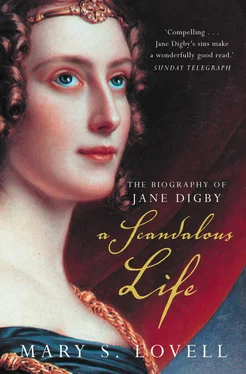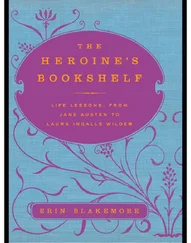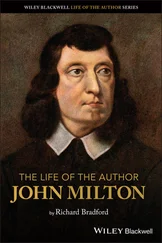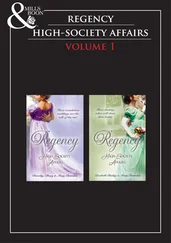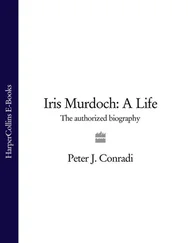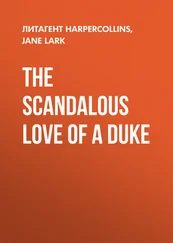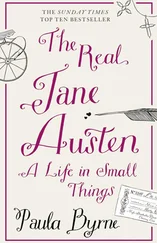A Scandalous Life
The Biography of Jane Digby
MARY S. LOVELL

This book is dedicated to
Joan Williams
to whom I owe a great deal;
she knows why.
And also to my aunt
Winifred Wooley
who is a great lady.
‘How could this Lady Ellenborough, whose scandalous life is known to all the world, have deceived you, Your Majesty?’
Letter to King Ludwig I from his mistress’s maid
Cover
Title Page
Dedication
Epigraph
Preface
1 Golden Childhood 1807–1823
2 The Débutante 1824
3 Lady Ellenborough 1825–1827
4 A Dangerous Attraction 1827–1829
5 Assignation in Brighton 1829–1830
6 A Fatal Notoriety 1830–1831
7 Jane and the King 1831–1833
8 Ianthe’s Secret 1833–1835
9 A Duel for the Baroness 1836–1840
10 False Colours 1840–1846
11 The Queen’s Rival 1846–1852
12 The Road to Damascus 1853
13 Arabian Nights 1853–1854
14 Honeymoon in Palmyra 1854–1855
15 Wife to the Sheikh 1855–1856
16 Return to England 1856–1858
17 Alone in Palmyra 1858–1859
18 The Massacre 1860–1861
19 Visitors from England 1862–1863
20 The Sitt el Mezrab 1863–1867
21 Challenge by Ouadjid 1867–1869
22 The Burtons 1870–1871
23 Untimely Obituary 1871–1878
24 Sunset Years 1878–1881
25 Funeral in Damascus 1881
Appendix: Last Will and Testament of the Hon. Jane Digby
Epilogue
Bibliography
Index
Acknowledgements
About the Author
Author’s Notes
Notes
Praise
By Mary S. Lovell
Copyright
About the Publisher
Friends often ask me how I choose my subjects. The answer is that my subjects usually choose me, and so it was with Jane Digby.
This book began at a cocktail party at the RAF Club in London in the spring of 1992 when Jane Digby’s name and her story came up in conversation. I had never heard of her, so I made a mental note to do some research and rapidly found myself in the early stages of an obsession that was to last several years. Who was Jane Digby, and why should she cast such an appeal?
Born into the English aristocracy with every conceivable advantage in physical beauty, social position and wealth, Jane spent the final years of her life married to a desert prince. The Palladian mansions and gilded Mayfair salons of her youth made way for low black goat-hair tents and rugs spread upon wind-washed sands. Even now, with jet travel and motorised transport, the Syrian desert is one of the few lonely places left on earth. What unlikely circumstance, I wondered, had led Jane Digby there a century and a half ago?
Barely out of the schoolroom, already regarded as one of the most beautiful women of her day, Jane had married an ambitious politician, Lord Ellenborough, who was twice her age. In achieving his desire for a Cabinet post, Ellenborough neglected his bride and she soon sought consolation elsewhere. Before she was twenty-one Jane’s love affair with an Austrian prince precipitated her into one of the most scandalous divorce cases of the nineteenth century. In April 1830, to the astonishment of its readers, The Times cleared its traditional front page of classified advertisements to carry a sensational news story – a verbatim report of the Ellenborough divorce hearing in Parliament which included intimate details about the beautiful peeress and her prince.
Jane did not dispute the charges. Head over heels in love, she had already run off to Europe. But her story did not end there. Subsequently, for over twenty years Jane was to have a number of love affairs with members of the European aristocracy including a German baron, a Greek count and the King of Bavaria, as well as an Albanian general from the mountains. During this time she also married twice and travelled from the royal courts of Europe to the wilder regions of Turkey and the Orient. After a succession of scandals and betrayals, she made a journey to Syria. By then she was almost fifty and feared her life was over. Astonishingly, the most exciting part of her story still lay ahead of her.
The Arab nobleman who had been engaged to escort her caravan to the ruined city of Palmyra fell in love with her. He was young enough to be her son, was of a different culture and already had a spouse; indeed, he had recently divorced a second wife but he asked Jane to marry him. Although she was doubtful at first, she was soon deeply in love and, ignoring the entreaties of British officials, placed herself willingly in the power of a man who could divorce his partners on a whim. Sheikh Medjuel el Mezrab was the love of her life, and he brought her all the romance and adventure she had ever dreamed of.
Inevitably, because of the years she spent in Arabia, Jane’s story invites comparisons with that of Lady Hester Stanhope, the niece and confidante of William Pitt who became the self-styled ‘Queen of the Desert’ a generation before Jane. But Hester Stanhope ended her life in Syria in abject poverty as an eccentric recluse, robbed, abused and eventually deserted by her Arab servants. Jane Digby lived as a respected, working leader of her adopted tribe, spending months at a time in the Baghdad desert, sharing the spare existence of the bedouin.
So astonishing was Jane Digby’s career to her contemporaries that no fewer than eight novels based on her character and various elements of her story were written during her lifetime – one for every decade of her life. From 1830 until her death in Damascus in 1881 her name was rarely out of the newspapers as she featured in one outrageous tale after another.
Was it possible, I wondered when I embarked upon this project, to discover the rationale of such a person who even as a young woman married to an eminent Cabinet Minister refused to concede to convention by hiding her illicit love affair? Who a century ahead of her time was completely free of any form of racial or cultural prejudice? Who saw travel to exotic destinations as a raison d’être second only to sharing her life with a great all-encompassing love (though she showed remarkably little regard for the immense difficulties involved in both)? Who had, even prior to her desert expeditions, carelessly abandoned the comfortable life of a royal mistress to live with an Albanian chieftain who was virtually a legitimised brigand?
Over a hundred years had elapsed since her death, but I knew that, in common with many contemporaries, Jane kept diaries all her life. Her first biographer, E. M. Oddie, who wrote A Portrait of Ianthe in 1935, had access to some of them; but several subsequent biographers (such as Lesley Blanch and Margaret Schmidt) declared that the diaries were lost. Since E. M. Oddie had quoted from the diaries hardly at all, this seemed especially tragic. So I set out to discover what had happened to them in order to learn about Jane through her own voice. I also decided to try to locate the diaries and correspondence of people who met or were friends with Jane, not only to see what more could be learned about her, but to give a three-dimensional perspective to her story.
I contacted Lord Digby, a direct descendant of Jane’s brother, Edward, and in April 1993 at his invitation I drove down to Minterne House in Dorset one morning to see his collection of Jane’s watercolours. Over lunch I told him about my work and, after a pause, he looked at me, seemed to come to a decision, and said, ‘Um, we do have Jane’s diaries here. But we’ve never shown them to anyone.’
Читать дальше
